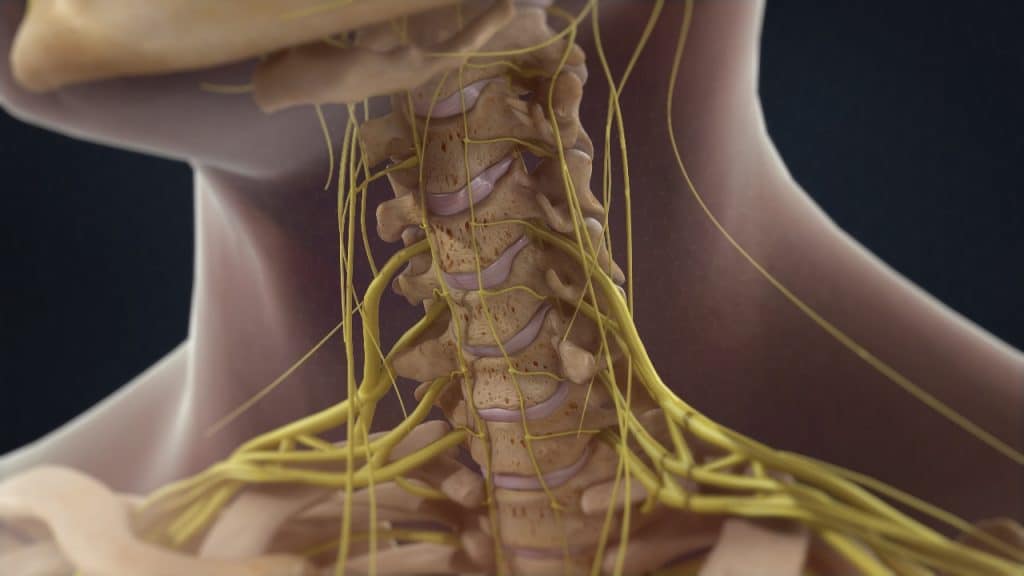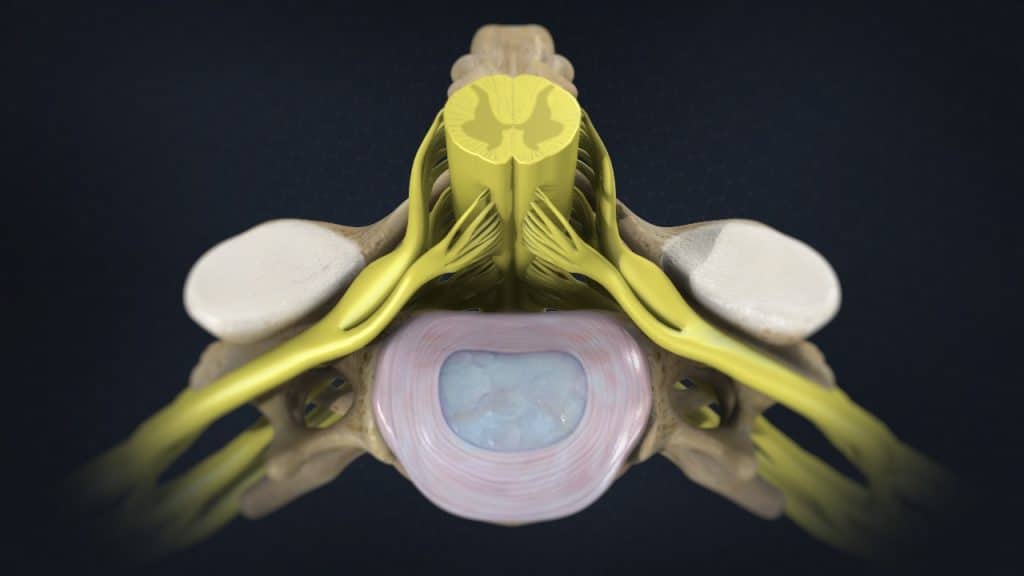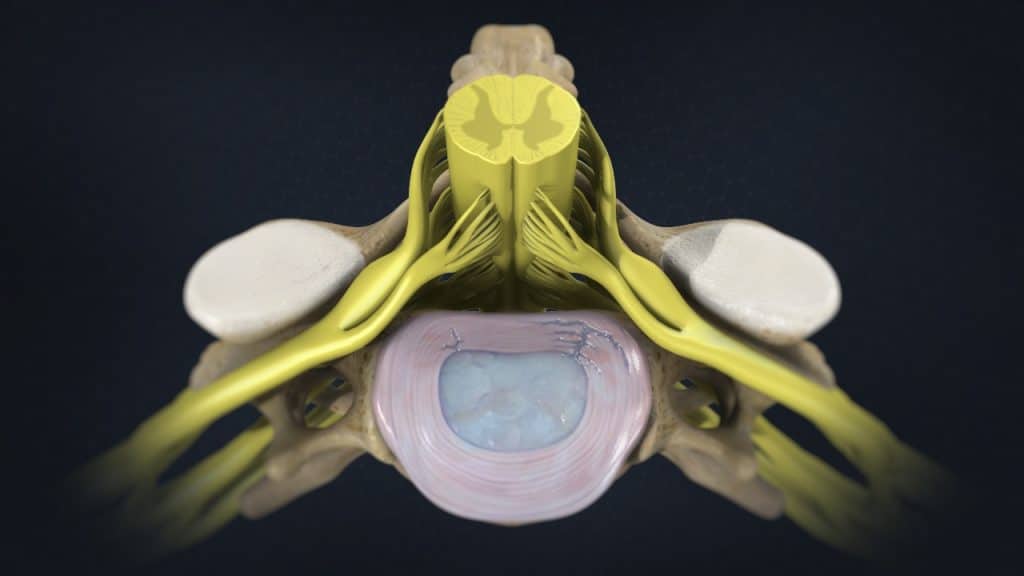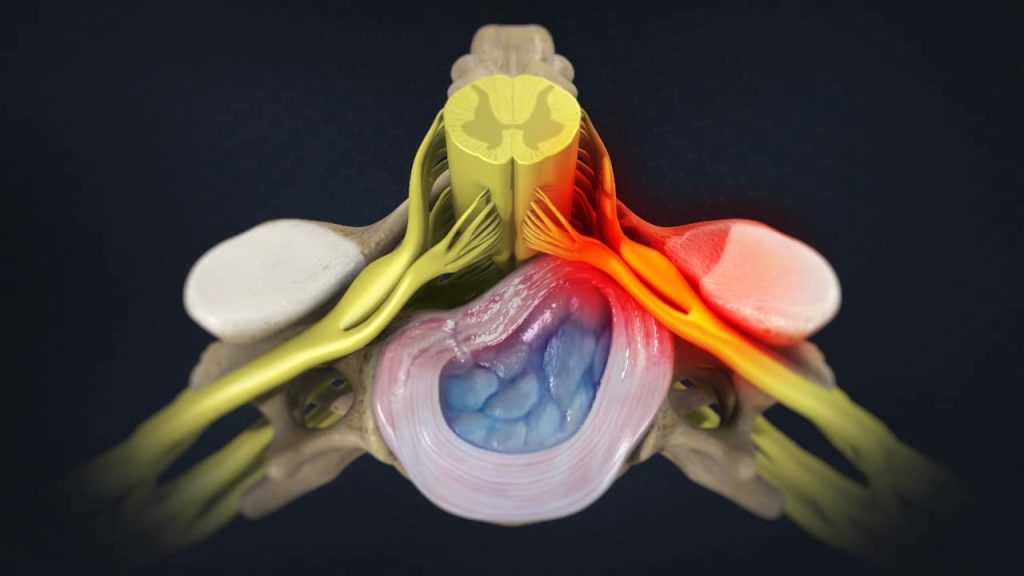Overview
Cervical disc herniation is a disease affecting the neck. A herniated disc can allow disc material to press harmfully against nearby nerve roots, triggering neck pain and possibly pain and nerve symptoms such as tingling, numbness, and/or weakness that can radiate down into the shoulder, arm, and/or hand.
Disc Anatomy
The intervertebral discs are shock absorbers that are located between the bones of the spine, called vertebrae (hence the name intervertebral). They are designed to help the back stay flexible while resisting forces and to allow bending, flexion and twisting of the spine. Each disc has a thick outer layer, known as annulus fibrosus, that surrounds the soft, jelly-like center, known as nucleus pulposus.
Herniated Disc
A herniated disc occurs when the jelly-like material inside the disc nucleus herniates or leaks out of the disc, and presses on an adjacent nerve root.
A disc protrusion refers to bulging of the disc during which the annulus fibrosus remains intact.
A disc prolapse is a condition in which the annulus fibrosus is perforated and disc tissue penetrates it and leaks out of the inside of the disc.
Causes
Α herniated disc commonly results from age-related weakening of the intervertebral disc, known as degenerative disc disease. It can occur gradually over many years as a result of normal wear and tear on the spine. A herniated disc can also be caused by heavy lifting or by sudden, damaging motions, such as abrupt bending or torsional movements. It can also be traumatic in origin.
Symptoms
Symptoms of a herniated disc vary depending on the location of the affected disc and the severity of the rupture. A cervical herniated disc may cause no symptoms, or the pain may be so intense that it disrupts a person´s quality of life. An affected disc in the neck may result in neck pain and possibly pain and nerve symptoms such as tingling, numbness, and/or weakness that can radiate from the neck down to the fingers, in the area supplied by the affected spinal nerve root.
Treatment
Treatment options for a herniated disc depend on the location and severity of the injury. Most cases of cervical herniated disc symptoms resolve on their own within four to eight weeks, so patients are often advised to start with nonsurgical treatments.
The cervical herniated disc can usually be treated successfully without surgery with a combination of pain management techniques, physical therapy and therapeutic spinal injections.
Surgery may be recommended if the conservative therapies do not alleviate pain within about 3 months. For patients with serious symptoms such as progressive muscle weakness or compression on the cervical spinal cord, known as cervical myelopathy, a surgery may be recommended prior to this period.
Reference
- Kraemer J., Hasenbring M., Kraemer R., Taub E., Theodoridis T., Wilke H.J.: Intervertebral Disc Diseases: Causes, Diagnosis, Treatment and Prophylaxis. Thieme 2009







